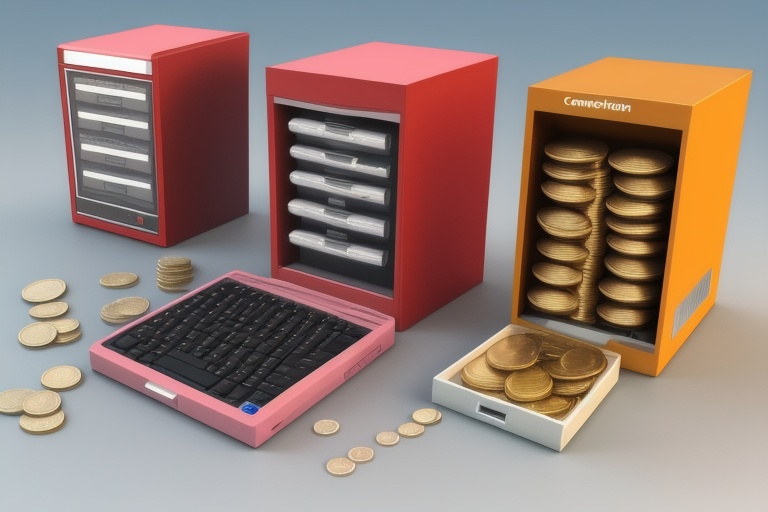Welcome to our blog, where we explore the fascinating world of coin collecting and coin valuation. Today's discussion illuminates the distinctions between bullion and numismatic coins—two captivating coin types that entice both collectors and investors. Valued for their intrinsic metal content, bullion coins contrast sharply with numismatic coins, which captivate with their rarity and historical allure. These differences not only underpin each coin's worth but also influence collecting strategies. This article imparts a deeper comprehension of each type's unique attributes, enabling you to align your acquisitions with your investment aspirations. Immerse yourself in the enthralling sphere of coin valuation and commence a journey through the dual realms of bullion and numismatic treasures.
Welcome to our blog, where we explore the fascinating world of coin collecting and coin valuation. Today's discussion illuminates the distinctions between bullion and numismatic coins—two captivating coin types that entice both collectors and investors. Valued for their intrinsic metal content, bullion coins contrast sharply with numismatic coins, which captivate with their rarity and historical allure. These differences not only underpin each coin's worth but also influence collecting strategies. This article imparts a deeper comprehension of each type's unique attributes, enabling you to align your acquisitions with your investment aspirations. Immerse yourself in the enthralling sphere of coin valuation and commence a journey through the dual realms of bullion and numismatic treasures.
Understanding Bullion and Numismatic Coins
The allure of coin collecting stems from the array of coins available to enthusiasts, each offering its own narrative and worth. At the heart of this hobby are two primary categories that captivate the interests of collectors and investors: bullion coins and numismatic coins. Recognizing the distinctive traits of these coins is critical for collectors seeking to shape a purposeful and satisfying collection.
Bullion coins are principally acquired for the precious metals they contain, such as gold, silver, platinum, or palladium. Their value is predominantly derived from the market price of the metal, calculated per ounce, and their purity level. What sets bullial apart is their accessibility in terms of cost, rendering them a practical starting point for newcomers to the field.
In contrast, numismatic coins possess value that transcends their metal content. Their worth is intricately linked to historical significance, scarcity, condition, and demand among collectors. These pieces often feature extraordinary designs or hold a place in history that makes them especially coveted, and thus, more valuable. Ranging from ancient coins to vintage U.S. currency, numismatics invite collectors into the past, offering a tangible piece of heritage.
Investment Goals and Risk Tolerance in Coin Collecting
When navigating the coin market, one's investment objectives and comfort with risk play pivotal roles in decision-making. Numismatic coins, while potentially yielding higher return, carry increased risk due to fluctuating collector interest and market dynamics. The wavering value of a particular coin can significantly alter based on tastes and trends.
Conversely, bullion coins, anchored by their precious metal content, offer a more consistent investment prospect. The enduring demand for gold and silver, combined with their storied history as trade commodities, assures that bullion retains value over time. For investors seeking security, bullion coins present a sound strategy, with their worth closely tied to the steadfast market for precious metals.
Strategies for Acquiring Bullion Coins
When purchasing bullion coins, a savvy approach emphasizes the metal's intrinsic value rather than paying a premium for collectability. A practical method is selecting circulated bullion coins and acquiring them in volume. This enables collectors to purchase coins at or near the spot price—the current market price of the metal—thereby reducing extra expenditures.
One such avenue for volume accumulation is Monster Boxes, filled with tubes of coins directly distributed from the mint to dealers, avoiding additional market exposure. This direct line ensures that collectors receive coins in pristine condition from their very inception.
At GoldBroker and similar outlets, a broad spectrum of bullion coins is available for both gold and silver investors. Offerings include 1 Ounce Philharmonic Coins and 1 ounce Maple Leafs, with their renowned purity, for investors to acquire near spot price. These options furnish investors with a reliable avenue into precious metal investments.
Making Informed Decisions for Your Collection
The choice between bullion and numismatic coins ultimately rests on individual objectives and willingness to navigate risk. Deciding which type suits your collection depends on careful consideration of long-term stability versus the allure of high-stakes investing.
Bullion coins present a valuable, stable foundation, upheld by the consistent value of gold and silver. They stand as sound long-term investments for those prioritizing security. Conversely, numismatic coins offer a distinct advantage for risk-tolerant investors, where their additional historic and rarity-based value can surge with market interest, though with greater vulnerability to fluctuations.
Armed with insight into the unique aspects of bullion and numismatic coins, you are better poised to refine your collection in a way that mirrors your financial aspirations and risk profile. Whether selecting the stalwart reliability of bullion or the exciting potential of numismatics, your choices will lead to a collection that not only possesses monetary value but also personal resonance and pride.
Information for this article was gathered from the following source.

